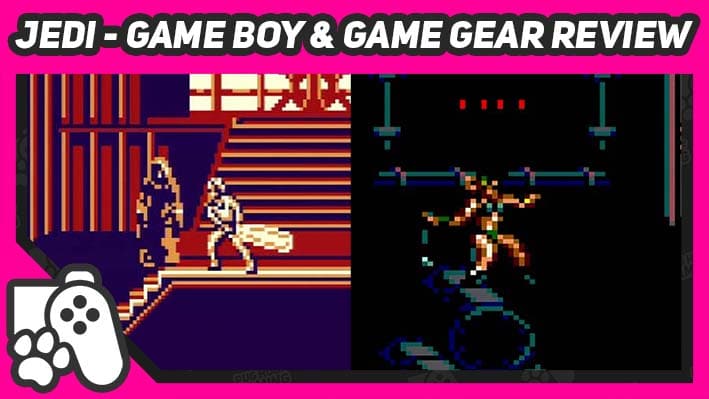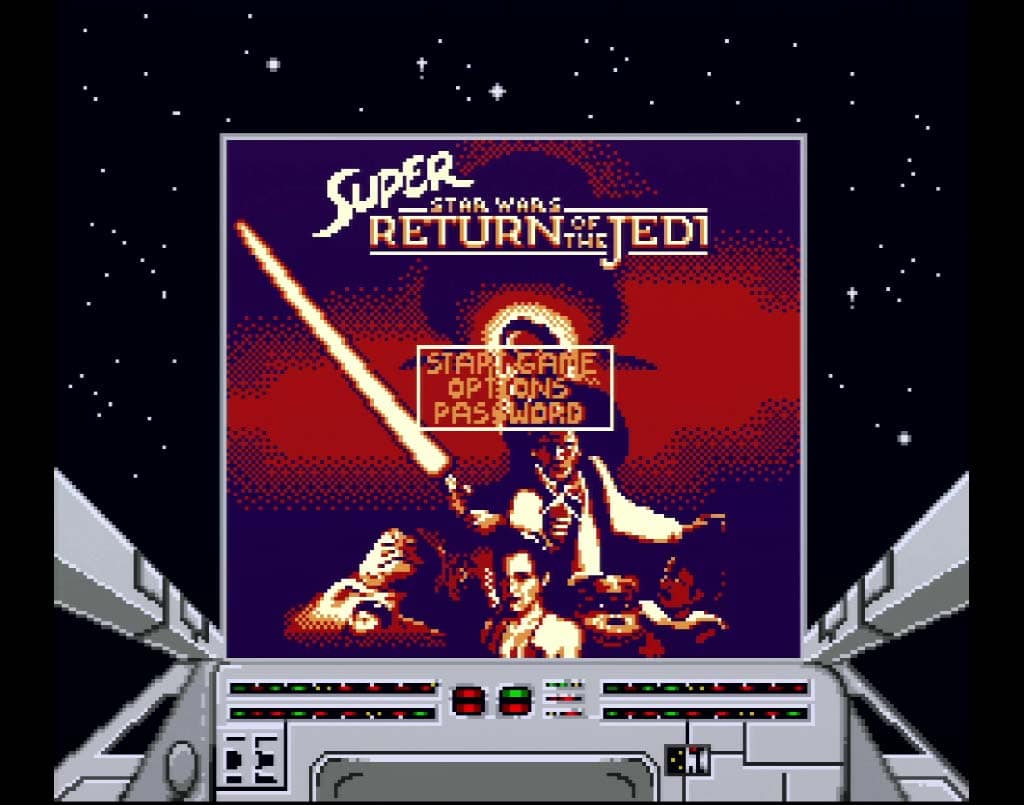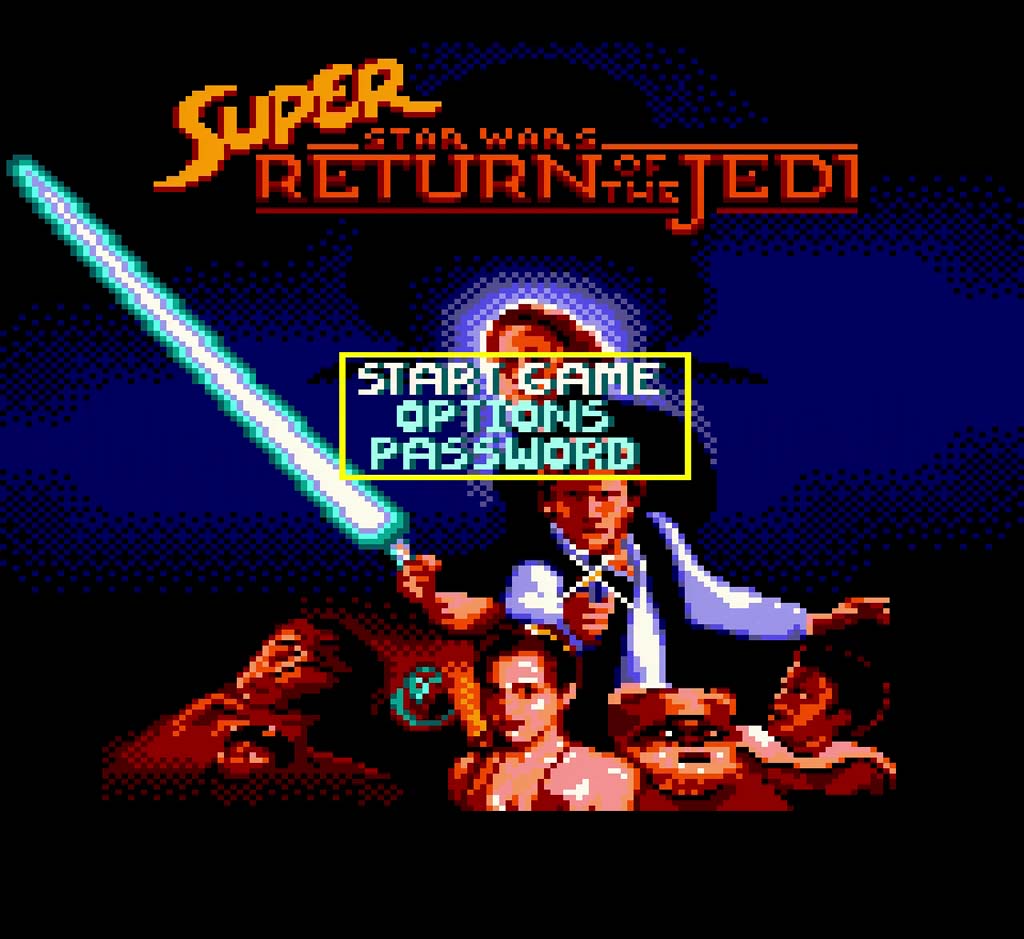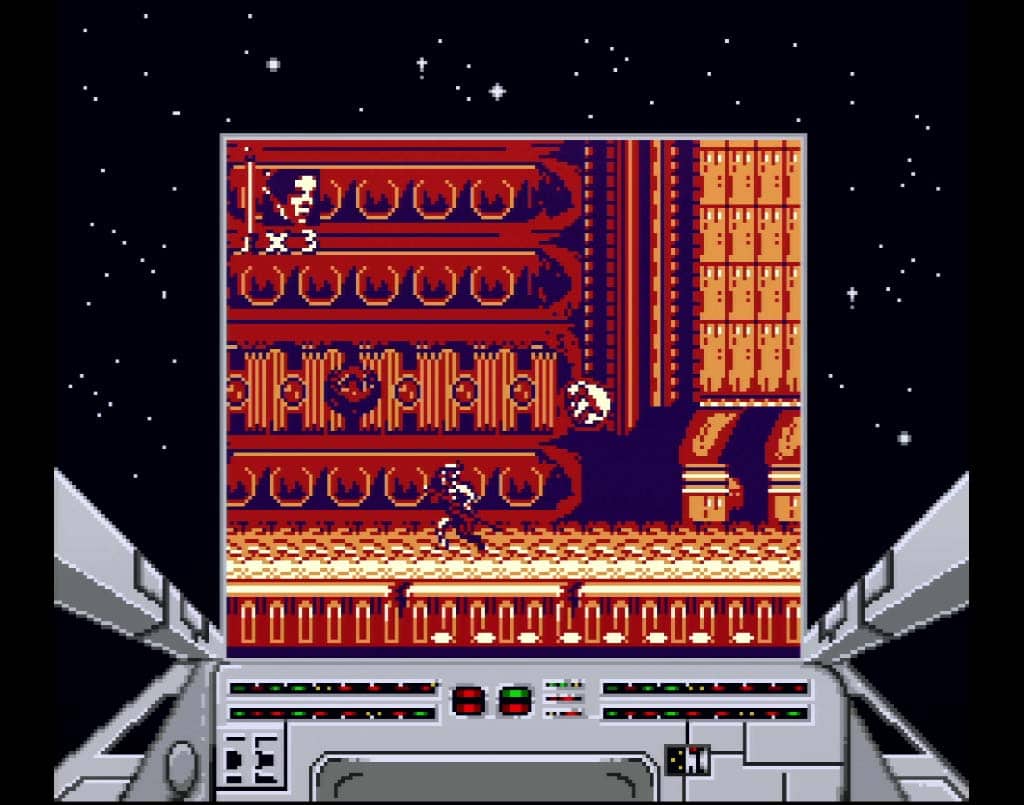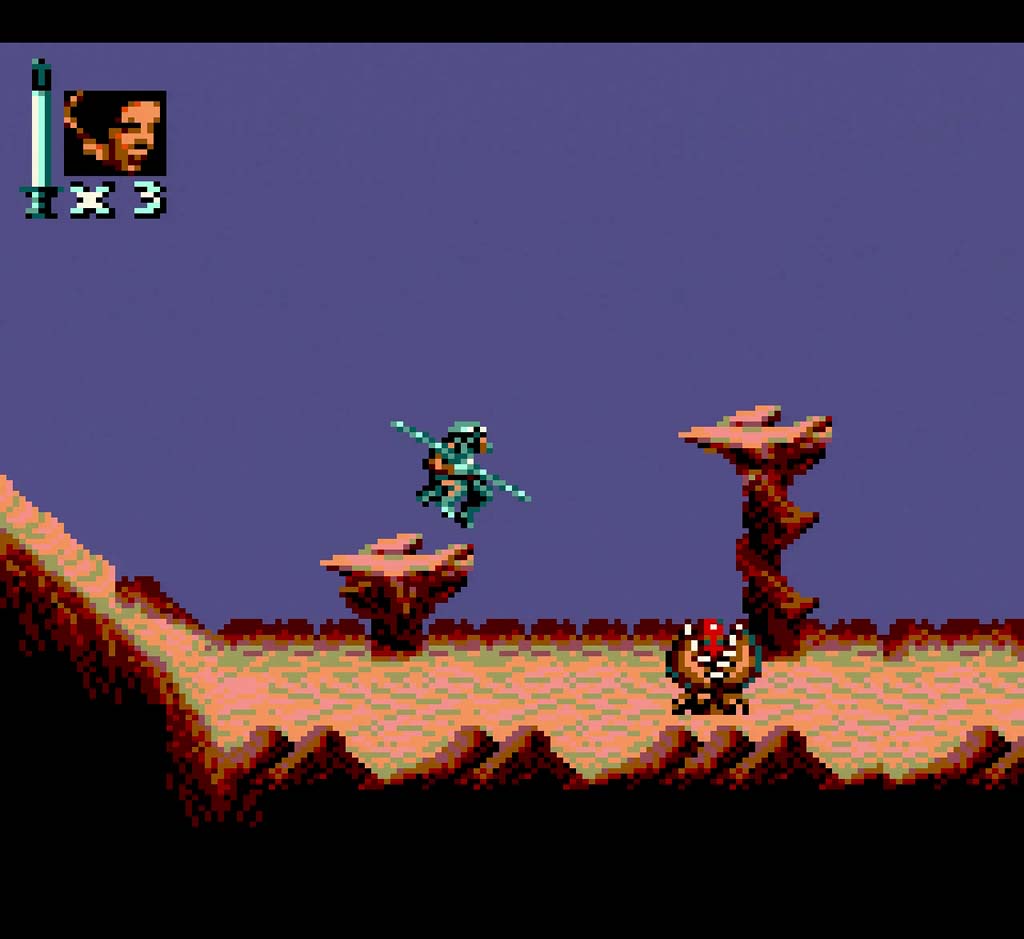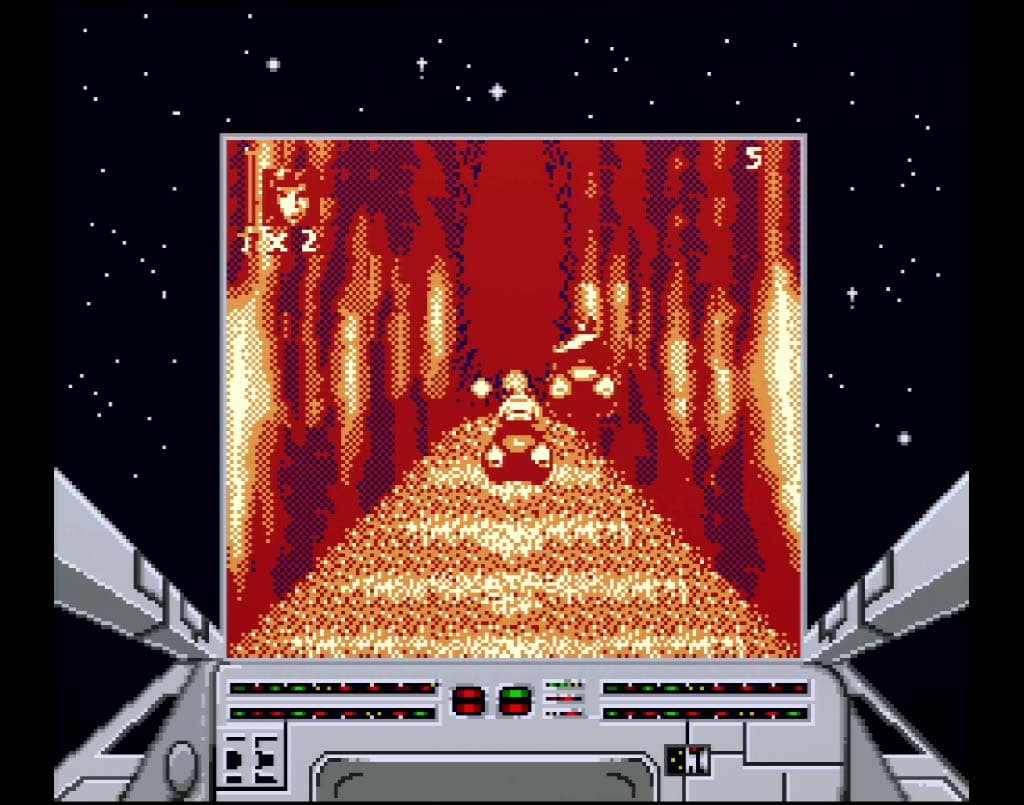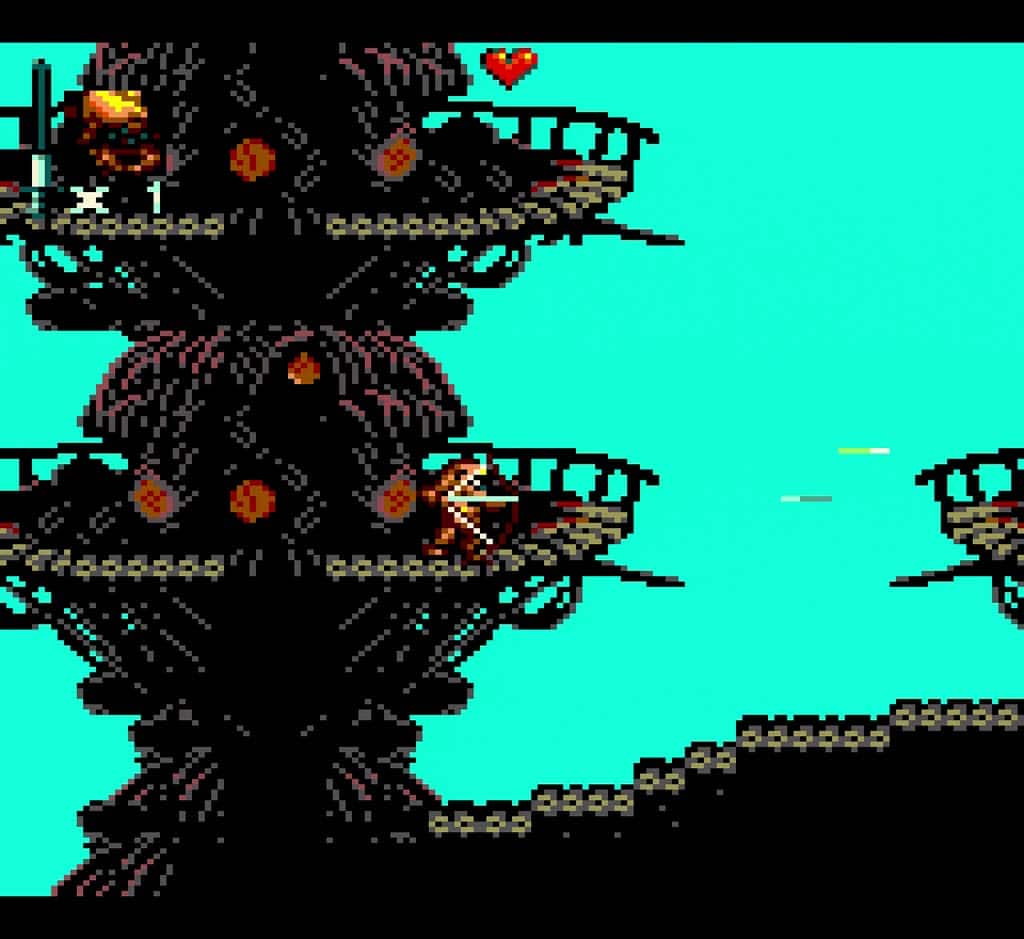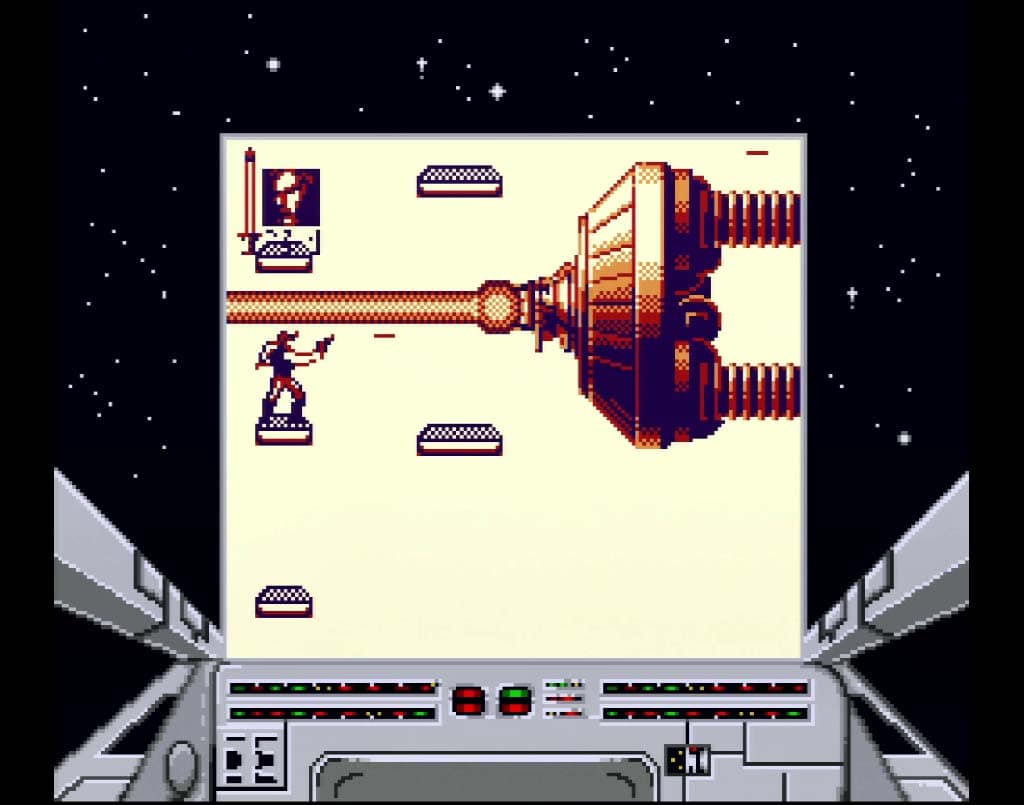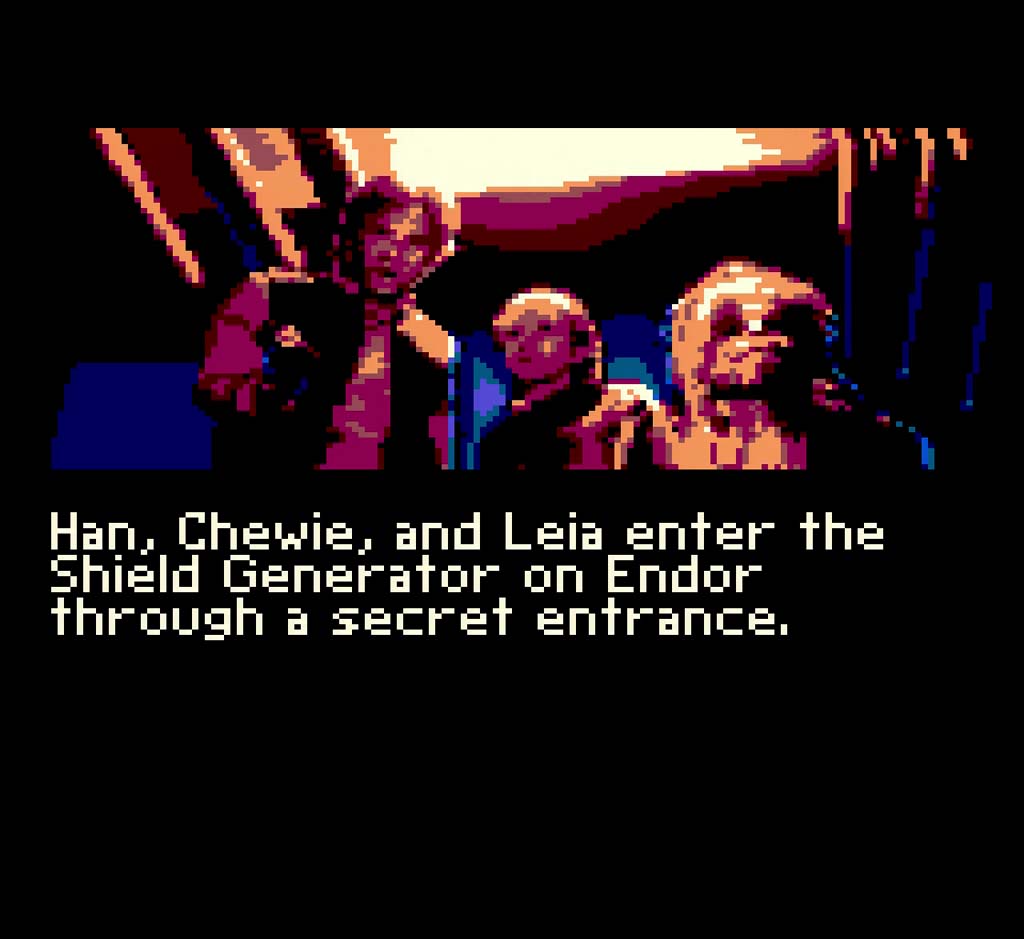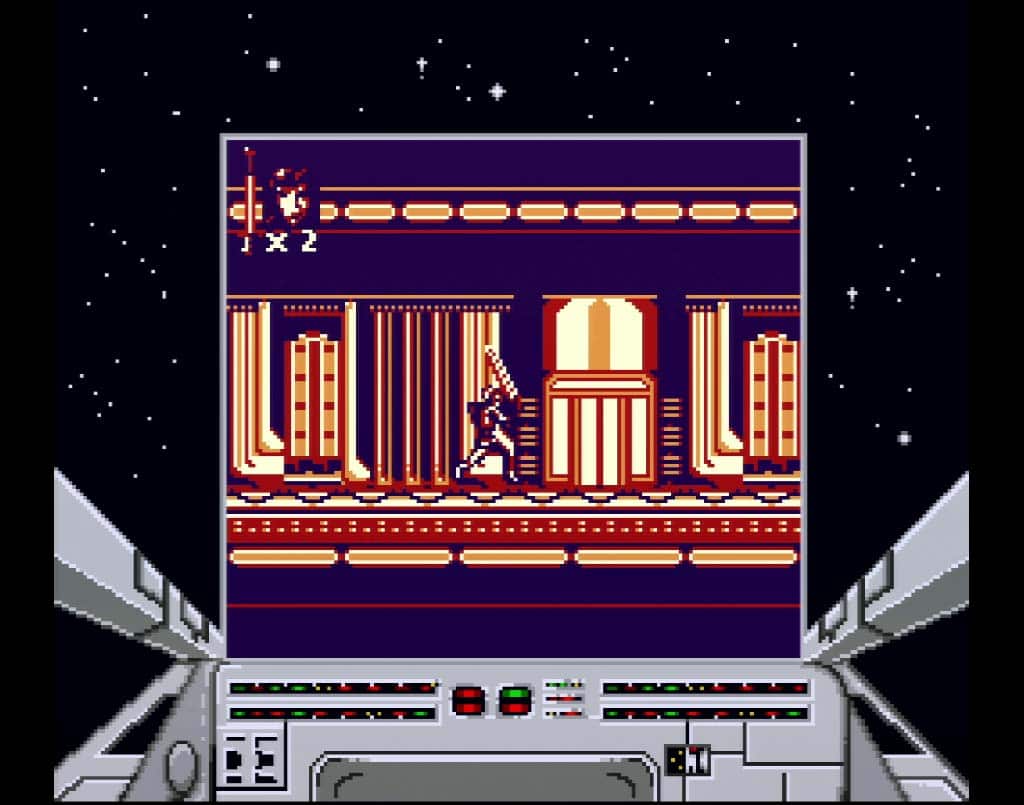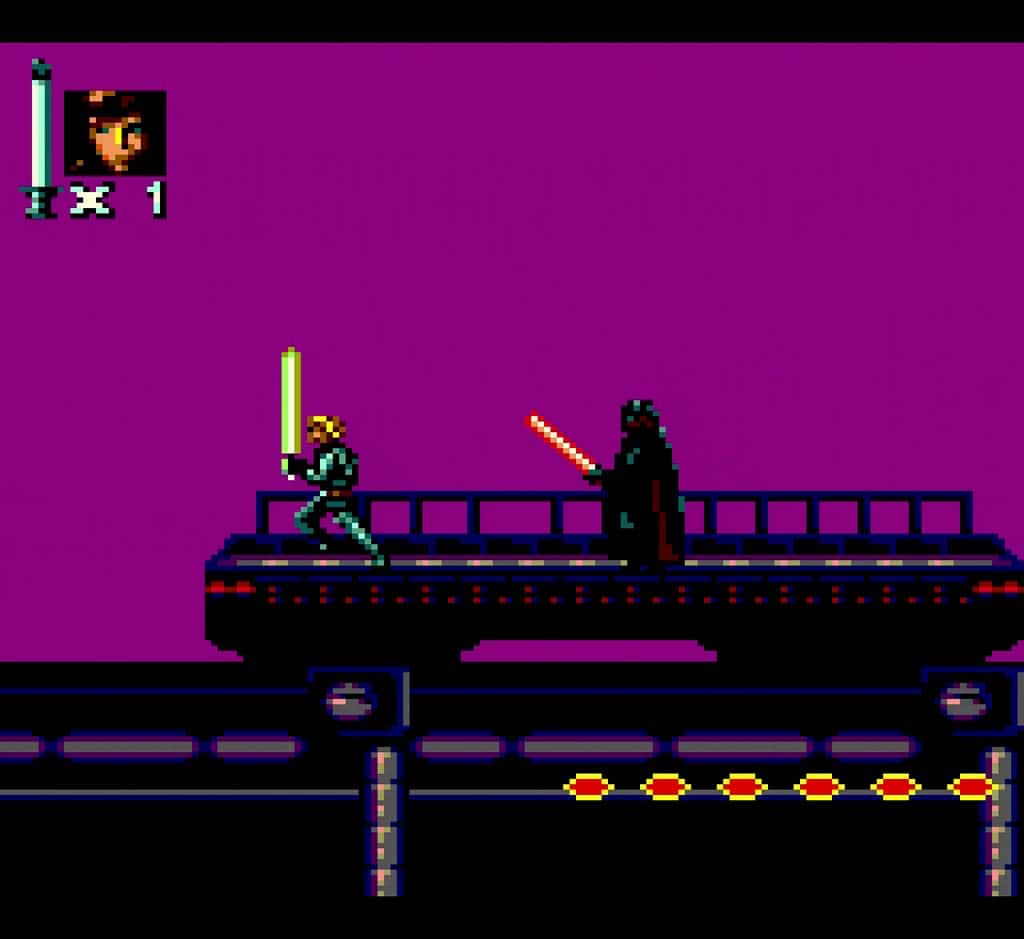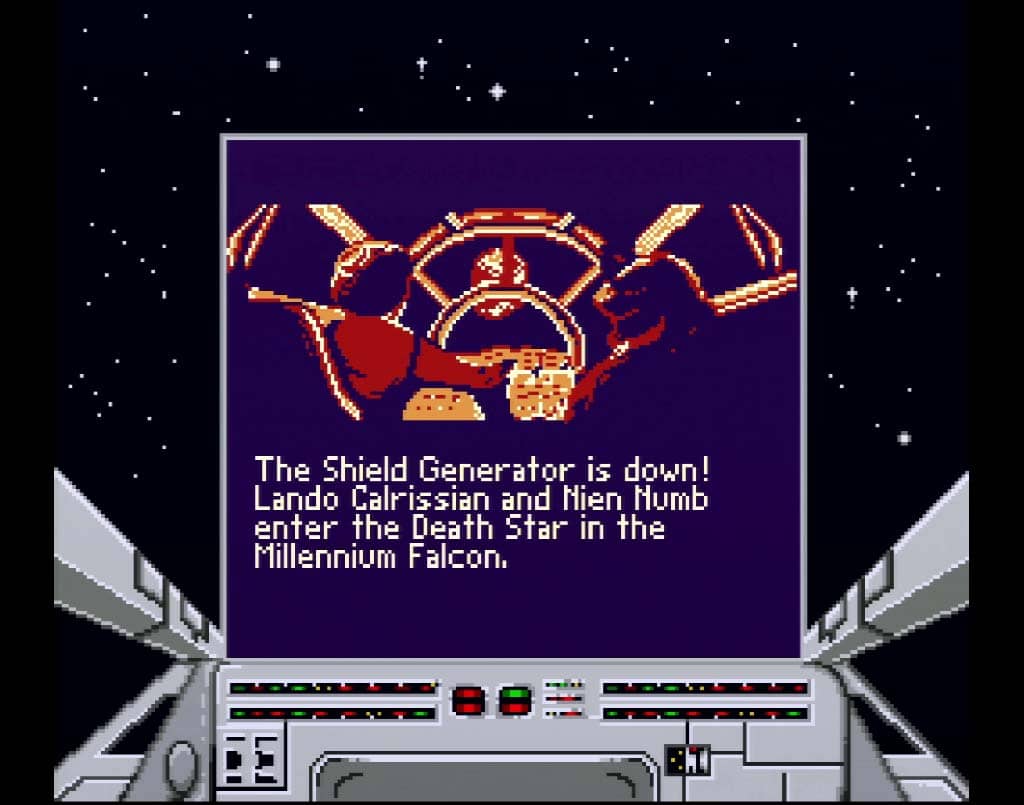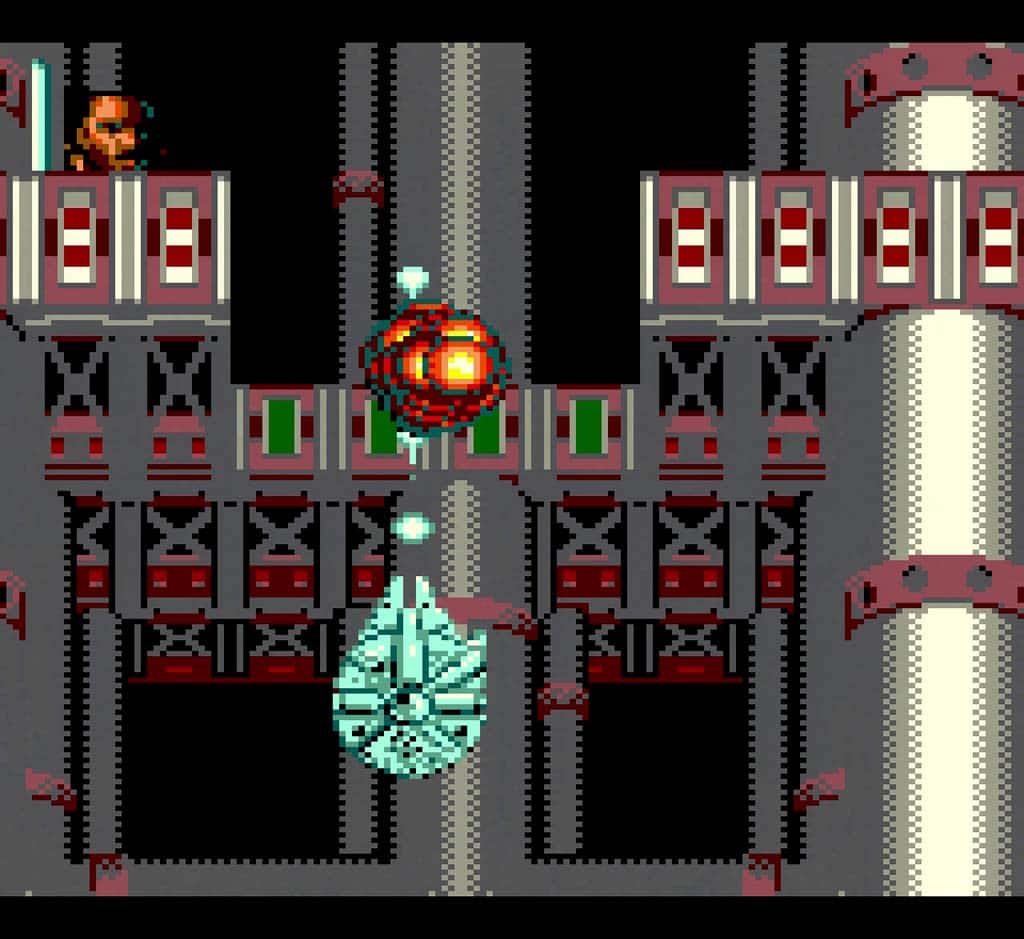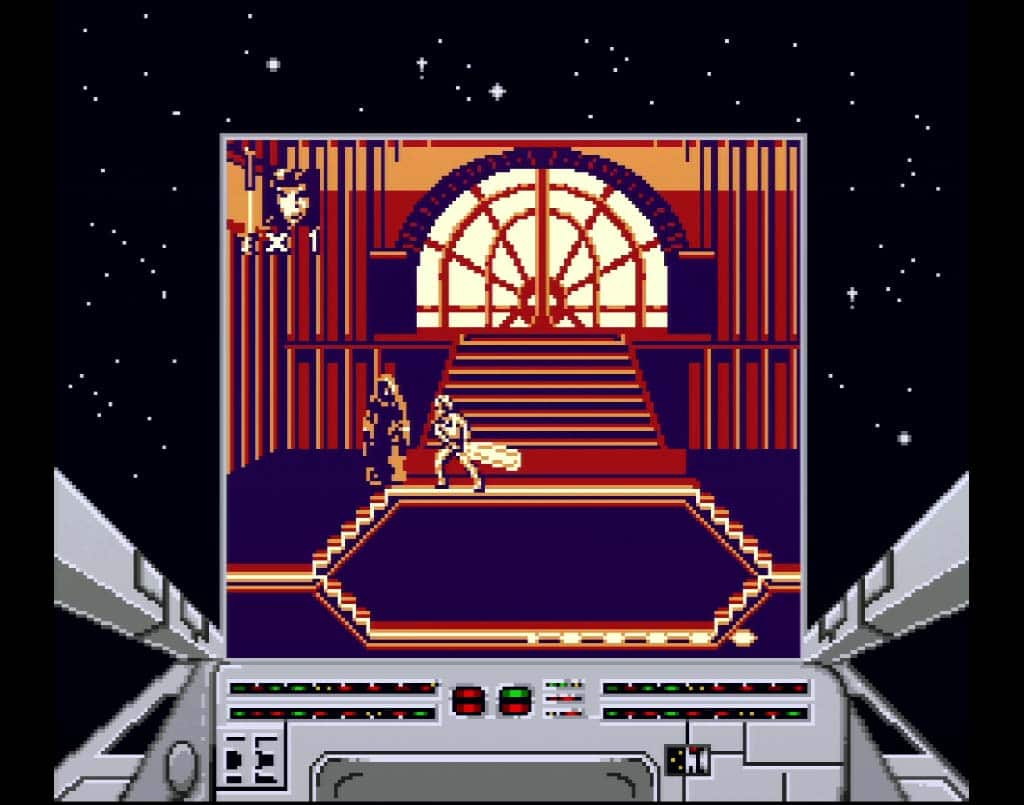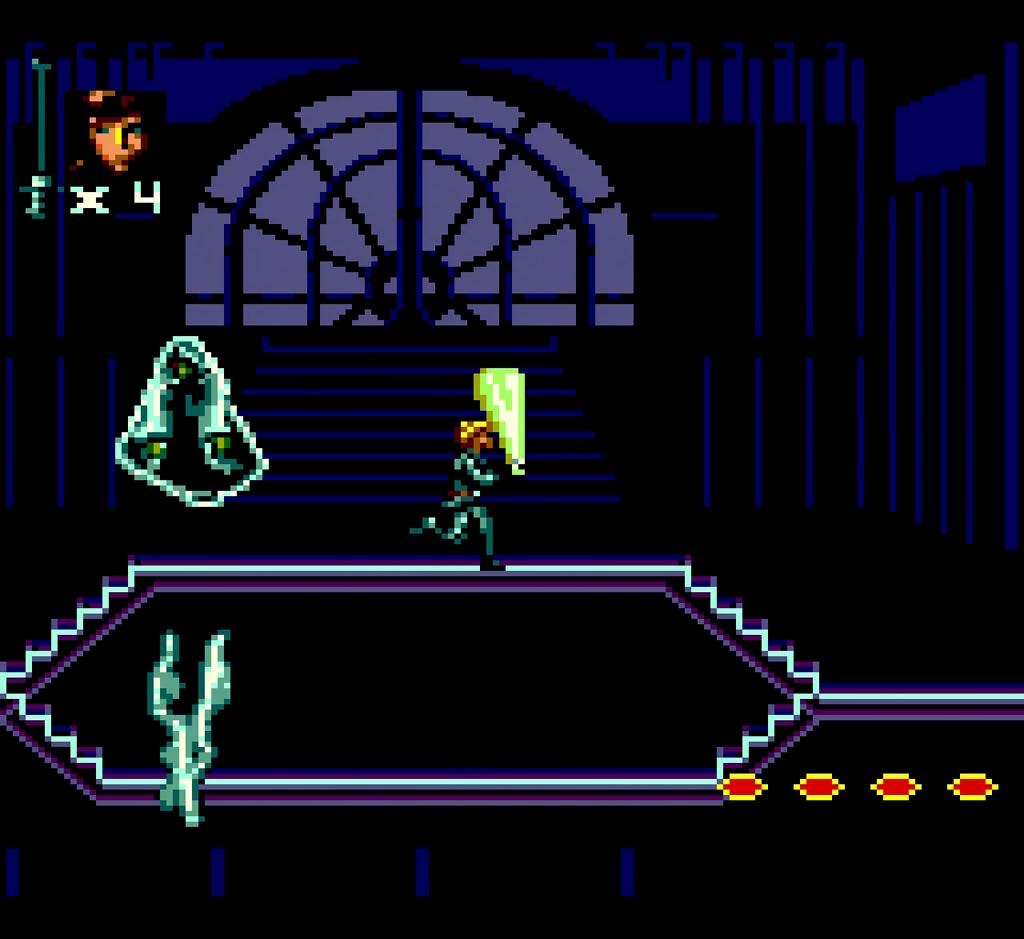So far, we’ve spent all month looking at a trilogy of Super Nintendo games, but for the rest of Super Star Wars month, it’s time to check out the two handheld ports of Super Star Wars: Return of The Jedi, that somehow ended up happening – Welcome to a review of both the monochrome Game Boy and full-colour Game Gear versions. Let’s find out if these ambitious ports do justice to the original SNES game.
And they are rather ambitious, aren’t they? It’s one thing to take a NES or Master System game and bring it down to the Game Boy and Game Gear, as had happened a lot in both portable system’s early days – But asking developers Realtime Associates to try and translate a game as good looking and sounding as Super Return of the Jedi is a helluva task.
But, I’ll tell you now – They might have stripped the game down a lot in terms of both the number of levels and the type of gameplay, but I don’t think there are any real story beats from the movie missing here. Sure, it’s a rather streamlined version of the SNES game with far fewer levels, but if anything it’s cut a lot of the fat from the 16-bit release.
Both handheld ports are almost identical – Obviously, the graphics are different between the two systems, but there’s absolute parity in the overall game mechanics and level design between the two. I only noticed a few differences in terms of powerup placement, but the majority of both games is the same.
I had initially planned on reviewing each one separately, but the two games are so similar it would be a fruitless exercise. So, we’re going to have some side by side footage so you can see for yourself how each version holds up against the other.
Boot the game up, and there’s an unsurprising bleepy rendition of the Star Wars theme, but at least the cutscenes are mostly there – No scrolling opening text for some reason, which does seem like an off omission for a Star Wars game.
Super Star Wars Return of The Jedi Review – Use The Force (Or Not)
Start the game and we skip the Mode 7 Landspeeder section from the original SNES version and skip straight to the action-platforming – Which, I think is better as that Landspeeder level is a bit dull. Luke, Chewbacca and Leia are all here and selectable – However, all missing their special powers.
Luke’s got no Force, Chewbacca’s got no spin, and Leia’s got no long-range move. Both Luke and Leia can do their double jump attack, and also have a block move activated by holding the B button, which is incredibly useful throughout the entirety of the game. Without his Spin move from the 16-bit version, Chewbacca’s a bit rubbish, by comparison, to be honest.
The levels have been completely redesigned for this port, but are still recognisable in terms of visuals. The small sprites are really hard to see on an original portable system, but certainly passable if you can play on a larger screen.
In case you’re wondering, all Game Boy footage has been captured using a Super Game Boy. This is a Super Game Boy-enhanced game, but sadly that just means it has a rather crudely drawn X-Wing cockpit-themed border.
As for the Game Gear version, I’m capturing this in a very roundabout way. A number of Game Gear games were converted by homebrew enthusiasts to work on Master System, this being one of them – So I’m running this game via the Mega Drive’s own Master System support using an Everdrive.
Back to the actual game. This starting area set in Tattooine is a relatively easy level to traverse. There are a few plants that spit projectiles at you, plus some angry Jawas – If you’ve got Luke or Leia, you can easily deflect their attacks.
The only real annoying enemy is these flying creatures that grab you and carry you away for aaaaaages. It’s not a long level, so you’ll soon find yourself fighting the door guard boss. It’s a lot less intimidating than the one in the SNES version, and because of its small size, it’s quite difficult to hit with blasters.
Luke and Leia’s double-jump attack makes you a little bit invincible, so it’s easier to just hit it with that, the moment it appears and avoid the falling rocks.
Onto Jabba’s Dance Hall now, which is mostly unscathed in this port, apart from the trapdoors no longer spitting out Rancor enemies. The Gamorrean guards throw axes at you, but they’re deflectable, and even this level’s boss, Bib Fortuna is easily dispatched of, closing this level.
Han is rescued, but there’s no time to talk about that as Luke now has to fight the Rancor, which thankfully retains its huge screen-filling size. However, as will be the case for all the bosses in the game, repeated double-jump attacks to the face will kill it dead.
Now it’s onto the Sail Barge with Luke, Chewbacca and Leia once again – But I’m surprised to see that Leia is in her Slave persona for this stage. She loses her Twirl ability from the SNES game and is unable to block. Holding B now does a more rapid whip attack – Sorry, I mean “Morning Star attack”. It’s not a whip!
The Sail Barge retains the environmental hazards from its bigger 16-bit brother, such as rolling barrels, steam pipes and pistons. However, the end of this level does do something better than the SNES version – Because instead of a weird ball-and-chain wielding boss, you get a mini-boss fight in the form of Boba Fett. This makes so much more sense for this level. Double-jump attacks and deflecting lasers for the win here, of course.
Immediately afterwards, you go one-on-one with Jabba The Hutt, who is still on his movable platform, throwing frogs at you – But still pretty easy to kill.
It feels like you only just got to Tattooine, but you’re already off to Endor – A far cry from the Super Nintendo version. Thankfully, the Speeder Bike minigame is still intact, and even without Mode 7 it still manages to play exactly the same.
There’s still the choice of playing as Luke or Leia, which makes no actual difference, not even a visual one. You’re still bumping off a certain number of Stormtroopers while avoiding trees. Admittedly, it is a little harder to avoid the trees as they do spawn very quickly and usually in your exact path. But, with a password system intact you’ll get through after a couple of tries.
Another nice surprise, as Wicket the Ewok is still a playable character. He’s a little fiddly to control, and his bow and arrow are pretty weak. His level isn’t quite as interesting as the original SNES interpretation – It’s very sparse and a lot of it is easily breezed past by avoiding enemies, using moving platforms and jumping down floors.
The weird droid hoverbike boss is here again, making about as much sense as before – Plus, it’s just as weak here.
Once it’s down, it’s time for the hardest level in the game, the Shield Generator. When I was a kid and owned the Game Boy version, this level was my Kryptonite, and I would happily skip it with passwords. However, now I’m a stubborn adult with more experience, I eventually finished it.
This stage is incredibly long, with a handful of particularly nasty drops, jumps and enemies. Finally, you get to play as Han, but he plays identically to Chewbacca, who is also playable in this area. He doesn’t have the awesome grenades anymore, so without a means of deflecting attacks, you can see why multiple deaths are inevitable.
Probably a good time to mention that the blaster upgrades of the 16-bit original are no longer a thing here. However, there are a few P icons that power up your character’s weapon, even if you’re a melee character. Thermal Detonators occasionally pop up, as do Shields, but neither of which are terribly useful in this game. At least the speedup powerup was removed complete, hooray!
The Shield Generator is one of those levels where the weapon powerups are almost essential. There are quite a few leaps of faith, and while you can look up and down using the Dpad, some of these moving platforms are just out of view.
Once you get past all of that, the laser boss of this stage is a pain in the bum and can take quite a while to kill while you’re jumping between platforms and avoiding its laser – The smaller screen makes this boss a fair bit tougher as there isn’t much room to move around.
Once you’ve beaten the Shield Generator, the rest of the game is pretty much a cakewalk. Now playing as Luke on the Death Star, this is a very plain platforming area. There are plenty of unstable platforms to climb, and enemies to fight – But, you’ve got a lightsaber that can easily deflect every enemy’s attacks right back at them.
One annoyance is that you do eventually reach a dead end with no idea of where to go, and it turns out you need to jump into this pit with no idea of what’s underneath.
The level ends with two bosses – First up, is a massive attack droid, which is a lot easier to kill in this game, as you can deflect its attacks and double-jump attack to get as many hits in as possible. As long as you don’t fall off the platform, you’ll be fine.
However, after this brief battle, you face Darth Vader. He doesn’t have many attacks, but his lightsaber swipes are very damaging. He jumps in the air every now and then, but all you need to do is double-jump a lot and avoid his lightsaber.
Now that Luke’s father has been redeemed, it’s time to climb the Emperor’s Tower. As you can imagine, there are a whole heap of Stormtroopers to battle. Which you could do, but it’s probably easier to jump over them and get through the area as quick as you can.
This stage feels quite long, as there’s a lot of waiting for moving platforms. Another attack droid miniboss awaits you at the top, which is even easier to destroy this time around as you’re on solid ground. After that miniboss is another enemy – An Imperial Guard that is not that much more difficult to beat than a regular enemy, just with more health.
He’s not the real boss here though, as next up you’ll be fighting Emperor Palpatine himself. The lightning bolts he fires are incredibly damaging, but if you double-jump into him while he’s flying around in between firing, you’ll be able to do a fair amount of damage without getting hit.
As is the case in the SNES version, the last two missions involve piloting the Millenium Falcon – Flying in to destroy the Death Star core, and then escaping while the whole structure is exploding. Instead of the awful first-person Mode 7 view, you’re flying the ship in a top-down view, which is much more fun and playable.
You can fire your weapon to blow up TIE Fighters and the occasional destructible walls, and also fly high and low using Up and Down on the Dpad, which you’ll need to do to avoid environmental hazards.
Despite the graphics being 2D, thanks to good use of colour or shades available, it’s not too difficult to see what pipes you need to go over and which ones you need to go under. I did find the Game Boy version was a little easier to see how tall objects were.
The second of these stages involves you escaping a wall of fire, so you’ll need to hold the accelerate button – But other than that, it’s an even more straightforward level as you don’t need to fight any TIE Fighters.
After these two final vehicular missions , you’ve reached the end of the game and the briefest of ending cutscenes. You’ll have finished the game, although you’ll probably be a little disappointed with your reward – Not even an 8-bit rendition of Yub Nub, for crying out loud!
But, disappointing endings is not exactly an uncommon thing for 8-bit games, especially movie licenses. Just tell yourself that it’s the journey, not the destination that matters – And the journey is pretty good on both systems in fact.
Super Star Wars: Return of The Jedi Review Summary
Because of how close the two games play, I wouldn’t say there is necessarily a better version. Of course, the Game Gear version has full-colour visuals and as a result, is a little easier on the eyes over the monochrome Game Boy version – But the trade-off is that the screen animation is a little less smooth than on the Nintendo edition, but not by much, to be honest.
In terms of music, your opinion may absolutely vary – They’re the same tracks here, with just slightly different instrumentations. I found the Game Boy’s audio to be a bit less grating for the most part, but at least both versions allow you to switch off the sound effects or music.
Of course, given the choice, I’d absolutely play the Super Nintendo game over these handheld ports. But it’s certainly interesting to play these two adaptations and see where the lines were drawn and the fat was trimmed. There are even moments that are even better than their SNES counterparts, namely the Boba Fett boss fight and the far better closing missions.
Both games control well, surprisingly so for an 8-bit platformer. The small sprites might make it a little tougher if you’re using the originally intended systems, but at least characters are responsive to control and collision detection is solid – Not always something you could count on in games like this.
I’m not going to go out and say these games are amazing, but that doesn’t mean I’m not impressed with how good these ports turned out. Realtime Associates didn’t go too ambitious, they knew the limitations of the systems they were working with, and the results are two very competent games that absolutely have some merit to them. I enjoyed them enough to play through both entirely with it feeling like a chore – And I can’t even say that about Super Empire Strikes Back.
There’s some decent challenge here, and I’d say both versions are relatively fair games, 95% of the time. Neither port is bogged down with ridiculous jumps or leaps of faith, nor respawning enemies – They’re just fun little 8-bit platformers. And isn’t that a good thing? So endeth this Super Star Wars: Return of The Jedi review.
Super Star Wars Month is almost over, and this week you’ll get my entire playthroughs of both Game Boy and Game Gear ports of Super Return of The Jedi, plus an episode of Ending Theatre for each one. However, the true ending to this adventure comes next Monday, as I take a look at a Super Star Wars game that was never even released. See you soon.
